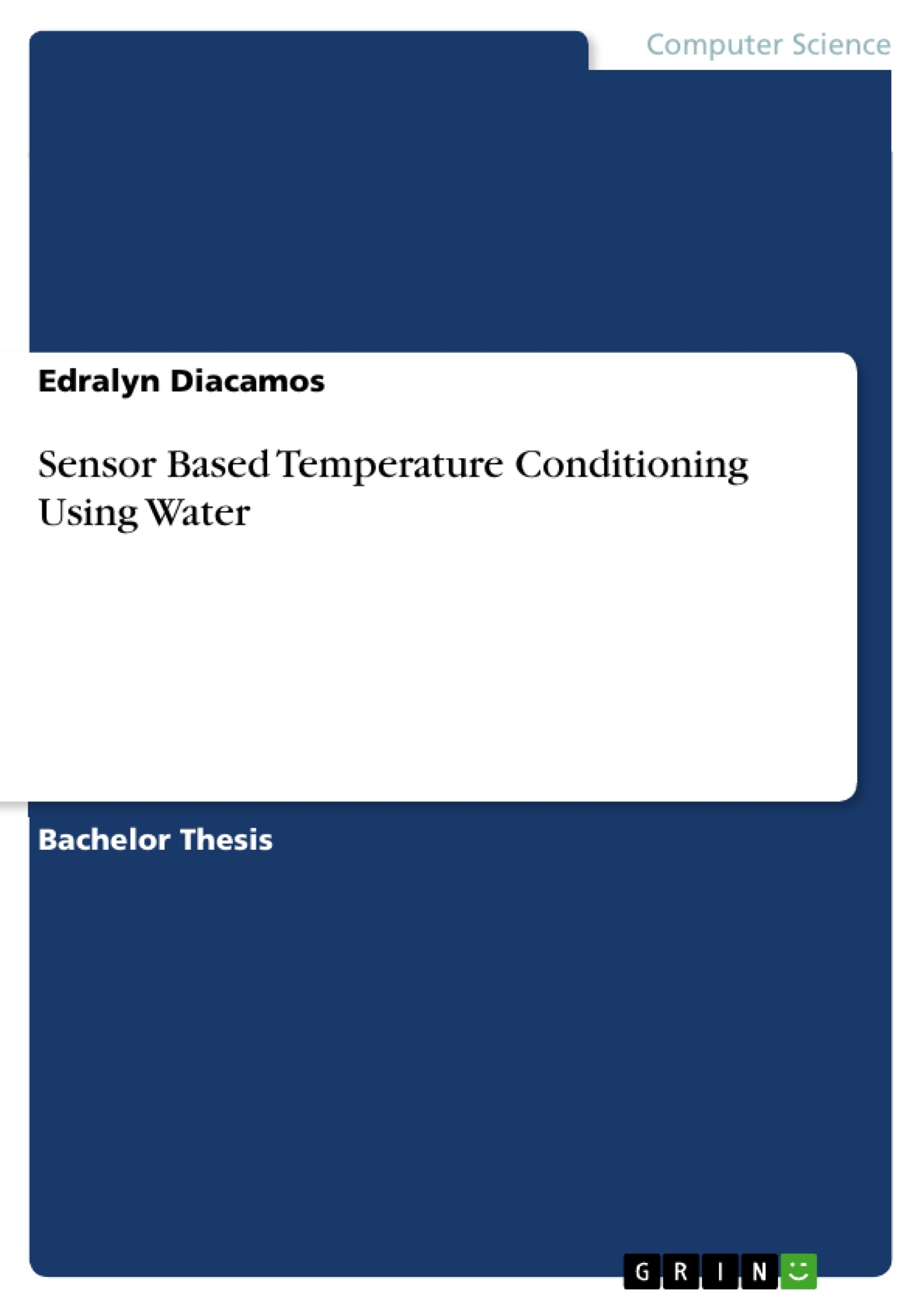This study focuses on developing and evaluating a sensor-based temperature conditioning system using water sprinklers for small-scale piggery farms at Cebu Technological University- Tuburan Campus. The main objectives are to identify and define the technical requirements for fabricating the sensor-based system, including detailed device plans, project costs, and design specifications. It also aims to assess the system's effectiveness in terms of features, functions, conformance, maintenance, serviceability, and durability to ensure it meets the practical needs of small-scale piggery farms. Additionally, the study evaluates user acceptability based on perceived usefulness, ease of use, behavioral intention to use, and actual usage, providing insights into its potential adoption and integration into farm practices. Finally, the study seeks to develop a comprehensive maintenance program to support the long-term sustainability and operational efficiency of the sensor-based temperature conditioning system in piggery farms.
The study employs a quantitative research method to gather insights from stakeholders involved in small-scale piggery farming. The research is anchored in theories such as the Technology Acceptance Model, Technology Dimension Theory, Technology Adoption, and relevant local legislation such as Republic Act No. 11293 and Republic Act No. 11337. Findings will highlight the importance of user familiarity with product features to enhance usability and prevent confusion. Moving forward, collaborative efforts between stakeholders and researchers will be essential to optimize the sensor-based temperature conditioning system, ensuring its effectiveness and alignment with local needs and sustainability objectives. Positive results from the effectiveness and product acceptability assessments are expected to indicate strong support for the system's usability, impact, and potential to improve temperature management in small-scale pig farming.
Inhaltsverzeichnis (Table of Contents)
- Chapter 1. THE PROBLEM AND ITS SCOPE
- Rationale
- Theoretical Background
- Statement of the Problem
- Significance of the Study
- Scope and Limitations
- Definition of Terms
- Chapter 2. REVIEW OF RELATED STUDIES AND LITERATURES
- Related Literature
- Related Studies
- Chapter 3. RESEARCH METHODOLOGY
- Research Method
- Research Design
- Flow of the Study
- Research Environment
Zielsetzung und Themenschwerpunkte (Objectives and Key Themes)
The study aims to develop and evaluate a sensor-based temperature conditioning system using water sprinklers for small-scale piggery farms at Cebu Technological University - Tuburan Campus. The objectives are to identify and define the technical requirements for fabricating the sensor-based system, assess its effectiveness and user acceptability, and develop a comprehensive maintenance program.
- Development and Evaluation of a Sensor-Based Temperature Conditioning System
- Technical Requirements for Fabricating the System
- Effectiveness and User Acceptability Assessment
- Comprehensive Maintenance Program Development
- Integration of Sensor-Based Technology in Piggery Farming Practices
Zusammenfassung der Kapitel (Chapter Summaries)
Chapter 1, "THE PROBLEM AND ITS SCOPE," introduces the research problem by outlining the rationale behind the study and providing a theoretical background. The chapter also includes the statement of the problem, significance of the study, scope and limitations, and definitions of key terms. Chapter 2, "REVIEW OF RELATED STUDIES AND LITERATURES," presents a comprehensive overview of relevant literature and studies, including related literature and related studies. Finally, Chapter 3, "RESEARCH METHODOLOGY," details the research method, design, flow of the study, and research environment used in the study.
Schlüsselwörter (Keywords)
The main keywords and focus topics of this study are: sensor-based, temperature conditioning, water sprinklers, small-scale piggery, mixed-methods approach, usability, effectiveness, and product acceptability. The research focuses on the application of sensor-based technology in piggery farming, particularly in the area of temperature management. The study evaluates the effectiveness, usability, and user acceptance of the developed system, highlighting the importance of aligning technology with local needs and sustainability objectives.
- Quote paper
- Edralyn Diacamos (Author), 2024, Sensor Based Temperature Conditioning Using Water, Munich, GRIN Verlag, https://www.grin.com/document/1495841



